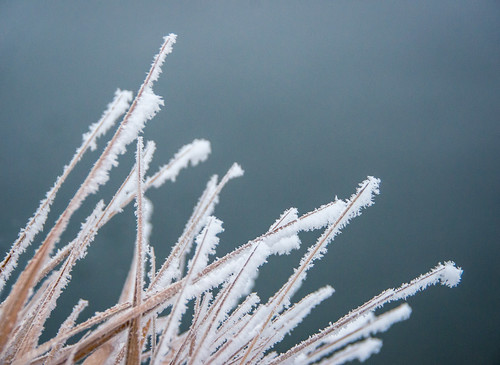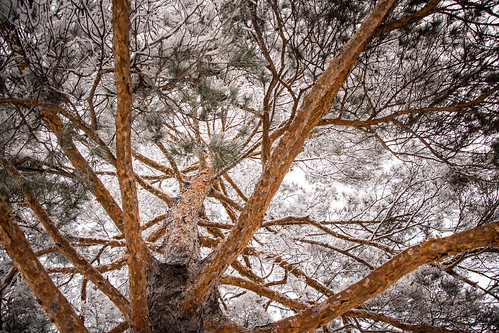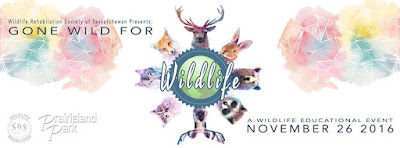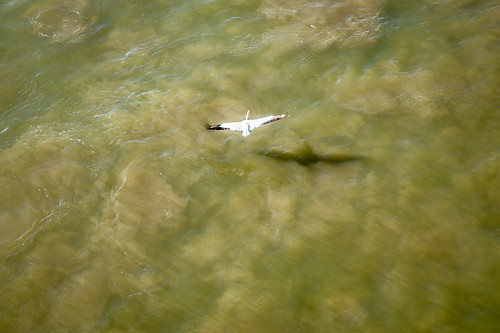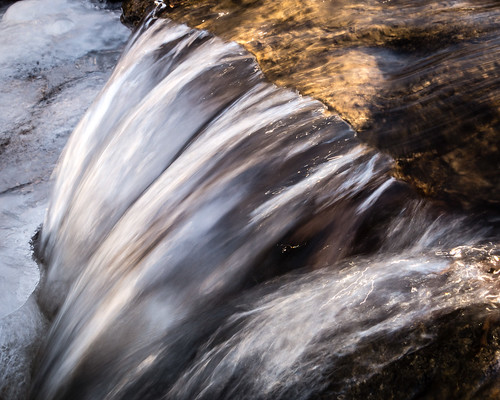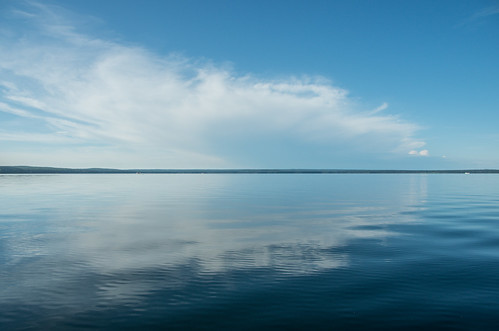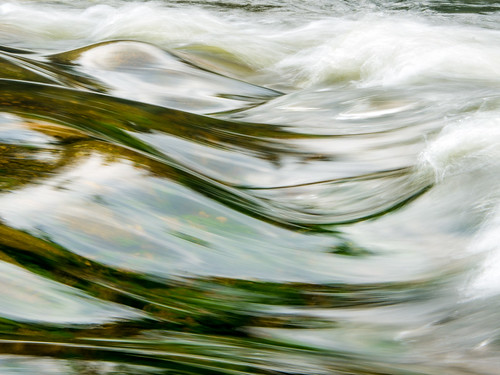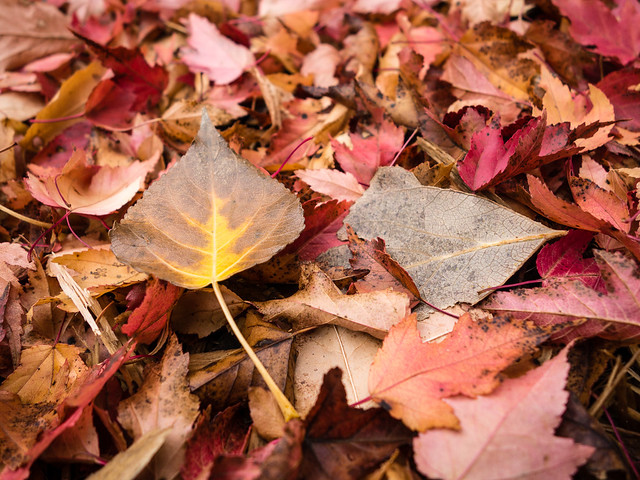Tuesday, 29 November 2016
EcoSask News, November 29, 2016
Upcoming Events
Environmental Justice & Sustainability, Dec. 2 (Saskatoon & online)
Dr. Randolph Haluza De-Lay, delegate to the climate negotiations in Marrakech, will be speaking on environmental justice and sustainability from 3-4 pm, Dec. 2, as part of SERI’s Talking Sustainability series. The presentation will also be available online.
Permaculture Christmas Party, Dec. 3 (Prince Albert)
The Prince Albert Parkland Permaculture guild is hosting a Potluck Christmas Party on Dec. 3.
River Access Study, Dec. 5 (Saskatoon)
The City of Saskatoon and Meewasin Valley Authority are conducting a study to identify river access requirements. The primary focus will be on facilities for launching and mooring motorized and non-motorized watercraft; however, it will address all forms of river access. There will be a public open house from 3:30-8 pm, Dec. 5. You can also complete an online survey.
Tracking Migratory Birds, Dec. 8 (Saskatoon)
Ann McKellar, a biologist with the Canadian Wildlife Service, will talk about the tools, from simple bands to GPS tags, that researchers use to track migratory birds in order to learn more about where they go and what threats they might face along the way. The Saskatoon Nature Society meetings are held monthly at 7:30 pm in Room 106, Biology Building, University of Saskatchewan.
The Eagle Huntress, Dec. 8-11 (Regina)
The Regina Public Library is showing the film The Eagle Huntress from Dec. 8-11. The film follows a 13-year-old girl as she trains to be an eagle hunter in Mongolia.
Grasslands Project, Dec. 8 (Moose Jaw)
Moose Jaw Public Library will be showing the Grasslands Project, a series of short documentary films about life on the southern prairies, at 2:30 pm, Dec. 8.
Saskatoon Young Naturalists
Jan. 7 – Snowshoeing
Jan. 21 – Tracks and Scats
Feb. 4 – Chickadee Pishing
Mar. 18 – Great Horned Owl Ecology
Space is limited; register early to avoid disappointment.
Christmas Bird Counts
Saskatoon & Area
Dec. 14 - Harris
Dec. 16 – Radisson-Borden
Dec. 17 – Clark’s Crossing
Dec. 18 – Qu’Appelle Valley Dam
Dec. 19 – Gardiner Dam Dec. 22 - Floral
Dec. 26 – Saskatoon Dec. 27 – Biggar
Jan. 2 – Pike Lake
Contact the Saskatoon Nature Society for full details and updated information.
Regina
Dec. 16 – Grasslands National Park
Dec. 18 – Craven
Dec. 26 – Regina
Christmas Bird Counts for Kids
Dec. 29 – Saskatoon
Jan. 7 – Regina
A full list of upcoming events can be found on the EcoFriendly Sask Calendar
2017 Bird Calendar
Nick Saunders’ 2017 Bird Calendar is now available for purchase.
In the News
We need to buy less and appreciate more - how to stop shopping mindlessly
Transition "is about communities stepping up to address the big challenges they face by starting local. . . . . In practice, they are reclaiming the economy, sparking entrepreneurship, reimagining work, reskilling themselves and weaving webs of connection and support."
EcoSask News is a weekly round-up of local news and events. Email us if you have items you would like us to include.
You can follow EcoFriendly Sask by liking us on Facebook, following us on Twitter, or by email (top right corner).
Tuesday, 22 November 2016
EcoSask News, November 22, 2016
Upcoming Events
Saskatoon CarShare Social, Nov. 23 (Saskatoon)
Interested in car sharing and sustainable transportation? Chat with Saskatoon CarShare Co-operative members at Amigo’s from 5-10 pm, Nov. 23.
Gone Wild for Wildlife, Nov. 26 (Saskatoon)
Bring your kids to Gone Wild for Wildlife, a wildlife educational event and fundraiser put on by the Wildlife Rehabilitation Society of Saskatchewan from 10 am to 5 pm, Nov. 26, at Prairieland Park, Hall C.
Carbonless Concert, Nov. 26 (Saskatoon)
The second in a series of Carbonless Concerts to promote local live music and renewable energy will be held at d’Lish by Tish Café on Nov. 26 from 6:30-9 pm.
Bird Watching for Beginners, Nov. 28/Dec. 3 (Regina)
Jared Clarke is co-hosting a Bird Watching for Beginners workshop in Regina. There will be an in-class session on Nov. 28 and small group bird watching in Wascana Park on Dec. 3. To register, call 306-581-6819 or email SKatlasReg8@gmail.com.
Rethinking Cretaceous Climate, Nov. 29 (Saskatoon)
Curious about greenhouse gases? Warmer ocean temperatures? Changing sea levels? Plate tectonics? It all happened during the Cretaceous! Join William W. Hay, a paleoclimatologist and paleoceanographer from the University of Colorado, as he discusses these issues and more at 7 pm, Nov. 29.
Chasing Sand Tiger Beetles, Nov. 29 (webinar)
Join Aaron Bell from Troutreach Saskatchewan as he discusses his research on the endangered Big Gibson’s Sand Tiger Beetle in the Elbow Sand Hills in a Nov. 29 webinar offered by SK-PCAP.
Save the Last Dance, Nov. 30 (Val Marie)
Learn about Grasslands National Park’s science-based Greater Sage Grouse recovery program in Val Marie on Nov. 30 at 7:30 pm.
Conservation Awareness & Appreciation Supper, Dec. 1 (Frontier)
Nature Saskatchewan is holding a free conservation awareness and appreciation supper in Frontier on Dec. 1. There will be presentations on the Stewards of Saskatchewan, South of the Divide Conservation Action, and Greater Sage-Grouse Recovery programs, as well as the importance of conservation in paleontology. RSVP (obo@naturesask.ca) by November 24 if you are planning on attending.
Storytime at the Zoo, Nov. 29-Dec. 14 (Saskatoon)
Join Saskatoon Library staff at the Zoo for stories, songs, and a chance to meet one of the zoo animals from 1:30-2:30 pm, Tuesdays and Wednesdays, from Nov. 29-Dec. 14.
Looking Ahead
Native Prairie Restoration and Reclamation Workshop, Feb. 8-9 (Regina)
The theme of the 2017 Native Prairie Restoration and Reclamation Workshop, Feb. 8-9 in Regina, is Reclaiming Spaces – Restoring Species. Registration is now open.
A full list of upcoming events can be found on the EcoFriendly Sask Calendar
In the News
Cities use almost two-thirds of the world’s energy and account for more than 70% of all greenhouse gases. Five innovations, ranging from financial mechanisms to new technologies, could help cities lead the energy future.
Cathy Holtslander, National Farmers’ Union, outlines the pros and cons of carbon pricing, especially as they apply to farmers and agriculture.
EcoSask News is a weekly round-up of local news and events. Email us if you have items you would like us to include.
You can follow EcoFriendly Sask by liking us on Facebook, following us on Twitter, or by email (top right corner).
Labels:
Birds,
Climate Change,
Energy,
Insects,
Music,
Prairie,
Transportation,
Urban,
Volunteers,
Wildlife Rehab,
Zoo
Thursday, 17 November 2016
Water Policy: Roadblocks and Opportunities
The Husky Oil spill made many people in Saskatchewan aware of water vulnerability in our province. Hayley Carlson, a Master’s student in the Johnson-Shoyama Graduate School of Public Policy, University of Saskatchewan, is studying the attitudes of different stakeholder groups to water management in the Saskatchewan River Basin.
Hayley began doing some preliminary research and immediately ran into a problem. Different people were telling completely different stories. Some expressed concern about water security. Others said there was no problem. It was time to dig a little deeper and see what she could discover.
Complex Water System
Saskatchewan is very fortunate. For the moment, we have enough water to meet most of our needs. However, that means the time for good planning is now – before, not after, we’re faced with water shortages.
The Saskatchewan River Basin provides water to Alberta, Saskatchewan, and Manitoba. The river travels through many different areas, from large cities to rural farms to northern forests. It provides water to 70% of Saskatchewan.
The water system’s complexity leads to a wide variety of challenges:
- Arid climate;
- Many different stakeholders with competing values, perspectives, and mandates: industry, agriculture, residential, wildlife and the natural environment;
- Diverse jurisdictional interests and trans-boundary management: federal, provincial, municipal, First Nations;
- Future uncertainty: population growth, economic development, climate change, and climate extremes; and
- Inadequacy of the current governance framework and tools to manage future changes.
The World Wildlife Fund claims 70% of the natural flow is allocated in the South Saskatchewan River Basin, the highest amount on any Canadian river. Some researchers suggest that the status of the largest food-producing region in Canada has come at the expense of water security.
The Prairie Adaptation Research Collaborative (PARC) is mandated to pursue climate change impacts and adaptation research in the Prairie provinces. They point out that Saskatchewan has one of the world’s most variable climates and has warmed at a faster rate than the global average. While their models indicate increased water flow in the near term, they also indicate a dramatic drop-off after 2050.
The impact of competing water interests are already being felt in the Saskatchewan River Delta, the largest inland freshwater delta in North America and a nationally significant wildlife area. The E.B. Campbell Dam has disrupted the seasonal water patterns, eliminating spring flooding, increasing winter flows, and decreasing surface water coverage. The Delta is becoming arid, with large fish kills near the dams and fewer moose.
Lack of a Shared Vision
Hayley began talking with and reading material produced by local stakeholders – industry, irrigation-based agriculture, Aboriginal groups, and environmentalists – to obtain a better understanding of how they viewed Saskatchewan’s water supply. It soon became clear that each group was telling a different story about Saskatchewan’s water, using different terminology to emphasize different facts, and measuring different things.
Irrigation Agriculture
Irrigation interest groups around Lake Diefenbaker are eager to expand irrigation infrastructure by 400%. Irrigation is very expensive and is only used by a small group of farmers growing specialty crops. Their calculations do not take into consideration possible changes in water supply due to climate change. In addition, they measure annual average usage rather than weekly or daily flow, which may mean water isn’t available when it’s most needed for production.
Industry
Industry maintains that the change caused by development is an illusion and, at the end of the day, you won’t notice any significant social or environmental change from industrial activity. They focus on how little water they actually consume, how much money they donate to conservation efforts, and how environmental regulation is ultimately in the hands of government. Industry fails to take into consideration how much water is cumulatively withdrawn, water quality when it is returned, and where it’s returned, which may be in a different location.
Aboriginal Groups
Seasonal fluctuations, as opposed to annual averages, are particularly important to Aboriginal groups, such as those living in or near the Saskatchewan Delta, as their traditional activities tend to depend on the ecosystem functions closely tied with seasonal changes. They claim human impact in the river basin has resulted in significant environmental degradation and an erosion of their ability to live a traditional lifestyle. First Nations reserves are often concerned about ensuring fresh drinking water for their residents. Aboriginal groups emphasize the importance of meaningful involvement in decision-making rather than cursory consultations.
Environmentalists
Like Aboriginal groups, environmentalists have concerns around water usage and availability in Saskatchewan. They assert the province is facing water security concerns, emphasizing emerging pressures from population growth, increased consumption, and climate change.
Environmentalists have tended to focus their concerns on industry. “I’d recommend addressing an equal attention to the big water users, such as irrigation agriculture, particularly in southern Alberta,” Hayley says. “Individual industrial projects need to be considered within the context of the bigger picture.”
Lateral Discussions Can Lead to Shared Vision
“People were all seeing completely different realities,” exclaims Hayley. “We assume we’re all looking at the same picture, but we’re not. It’s a fundamental human condition to believe that others are seeing and interpreting things the same way we do. We have to acknowledge that fact before we can start addressing water policy questions.”
There are competing values and priorities; however, adversity makes people uncomfortable, so we tend to avoid sitting down with all the stakeholders and holding a frank discussion about what we want in the future, what we’re prepared to give up, who’s involved in the discussion, and who are the winners and losers.
Policy analysts tend to view competing perspectives as nuisances, getting in the way of “objective” and “consensus-based” policy creation. Hayley disagrees. “Competing perspectives represent opportunities,” she says. “By listening to competing perspectives we can see what we’re missing and how we could work together in the face of emerging challenges.”
To avoid conflict, we rely on government to consult individually with each of the interested parties and use empirical methods to derive a policy solution. This method places a heavy burden of responsibility on government, leaves individual groups unaware of each other’s concerns, and does nothing to move stakeholders from policy positions that may be very different and often at odds with one another.
Hayley believes that lateral discussions involving all the different stakeholders would improve decision-making by ensuring that groups were aware of each other’s concerns. “People are more ready to negotiate a mutually beneficial solution once they’ve heard other people explain their perspective.” Hayley says.*
In addition, stakeholders need to have continuous access to policy-making with ongoing lateral discussions. “Situations evolve,” Hayley says. “You don’t want a policy that’s set in stone.” A shared vision becomes a foundation for evaluating and addressing the complexity and uncertainty of water security issues.
Accommodating Uncertainty
In Getting Outside the Water Box: The Need for New Approaches to Water Planning and Policy, Patricia Gober states that “Too much attention has been focused on reducing, clarifying, and representing climatic uncertainty and too little attention has been directed to building capacity to accommodate uncertainty and change. Given the limited ability to forecast the future climate, emphasis must shift to the human actors and social dynamics of water systems, including planning processes, work practices, operational rules, public attitudes, and stakeholder engagement.”
She goes on to say that decision-making under uncertainty strategies “change the research and policy question from what is the most likely future to what kind of future do we want and what decisions do we need to make to get there. These questions are political, not scientific; they require participation from a very wide range of water stakeholders—from farmers, industries, and municipal water providers and customers to environmental groups and linked land and energy sectors. Engaging these diverse stakeholders in an iterative, long-term discussion about the future of water systems is essential for deciding how much risk of deficit we are willing to take and what sacrifices we are willing to make to mitigate this risk.”
It’s time we step up to the challenge, recognize the fundamental role water plays in our lives, and embrace the complexity of listening to different points of view.
See Also
South Saskatchewan River Watershed Stewards
Climate Change and Water in the South Saskatchewan River Basin, PARC (2007)
Saskatchewan’s Natural Capital in a Changing Climate: An Assessment of Impacts and Adaptation, PARC (2009)
Cumberland House Councillor Raises Alarm over the ‘Dying’ Saskatchewan River Delta, Saskatoon StarPhoenix (August 1, 2016)
Saskatchewan Adds New Secretary for Farm Irrigation, Canadian Cattlemen (August 23, 2016)
* In Narrative Policy Analysis and the Integration of Public Involvement in Decision Making, Greg Hampton recounts the story of two communities with divergent opinions about the construction of a water treatment plant to improve water quality across the region. After listening to each other’s opinions, they were able to develop a new proposal which would address the needs of both communities.
Tuesday, 15 November 2016
EcoSask News, November 15, 2016
Upcoming Events
Photography with a Purpose, Nov. 15 (Regina)
Branimir Gjetvaj will present at the Regina Photo Club on Nov. 15 on the topic, Photography with a Purpose – Reflections by a Conservation Photographer.
No Dakota Access Pipeline: Solidarity Teach-In, Nov. 15 (Saskatoon)
Event organizers will make sense of No Dakota Access Pipeline in the local context from 4-6 pm, Nov. 15, at the No Dakota Access Pipeline: Solidarity Teach-In.
Stormwater Management, Nov. 15 (Saskatoon)
Matt Wooten will discuss Qcritical, a stormwater management system, at Tox on Tap, 6-9 pm, Nov. 15.
Permaculture Regina AGM & Herbs, Nov. 18 (Regina)
Jenine Demyen will talk about 5 useful Saskatchewan herbs at the Nov. 18 annual general meeting of Permaculture Regina.
Toward a Prairie Atonement, Nov. 18 (Saskatoon)
Trevor Herriot will read from his latest book, Towards a Prairie Atonement, at 7 pm, Nov. 18, at McNally Robinsons Booksellers.
For more book suggestions, check our list of Saskatchewan nature and environment books.
Household Hazardous Waste Day, Nov. 19 (Saskatoon)
You can dispose of household hazardous waste (e.g. light bulbs, aerosols, fuels) at the SaskTel Centre from 9 am – 3:30 pm, Nov. 19.
Saskatoon Nature Society Field Trips (Saskatoon)
Nov. 20, 1:30-5 pm – Pike Lake Birding
Nov. 27, 2-3 pm – Pre-Grey Cup Birding at President Murray Park
Dec. 3, 9 am-5 pm – Gardiner Dam Birding
Check the Saskatoon Nature Society’s website for full details and updated information.
Nov. 20, 1:30-5 pm – Pike Lake Birding
Nov. 27, 2-3 pm – Pre-Grey Cup Birding at President Murray Park
Dec. 3, 9 am-5 pm – Gardiner Dam Birding
Check the Saskatoon Nature Society’s website for full details and updated information.
Meet Spirt, a Great Horned Owl, at 1 pm, Nov. 20, at Wild Birds Unlimited.
Birds of Prey, Nov. 21 (Regina)
Dr. Ryan Fisher will discuss his research on the Ferruginous Hawk at the Nov. 21 meeting of Nature Regina.
Aboriginal & Northern Engagement in Environmental Remediation, Nov. 23 (Regina/Saskatoon)
Successes and Challenges: Aboriginal and Northern Engagement in Environmental Remediation Projects, a Johnson-Shoyama Graduate School of Public Policy lecture presented by Dr. Joe Muldoon, Saskatchewan Research Council, and Vice-Chief Joseph Tsannie, Prince Albert Grand Council, will be broadcast from 1:30-3 pm, Nov. 23, in Saskatoon and Regina.
Indigenous Perspectives on Conservation, Nov. 24 (Lumsden)
Rodger Ross, a Métis/Nehiyaw (Cree) and independent film producer will speak on Indigenous Perspectives on Conservation at 7 pm, Nov. 24, at Lumsden High School.
Agriculture in a Changing Climate, Nov. 24-26 (Saskatoon)
The National Farmers’ Union will be discussing Agriculture in a Changing Climate at their annual convention Nov. 24-26 in Saskatoon. The public is invited to hear Kent Mullinix speak about revitalizing family-based agriculture and farming communities while advancing food and farming systems that embody environmental stewardship, social equity, justice, and economic viability at 7 pm, Nov. 24.
A full list of upcoming events can be found on the EcoFriendly Sask Calendar
Build a Fence for Wildlife
Help Living Sky Wildlife Rehabilitation build a perimeter fence to keep their rescued animals safe. Buy a board, a post, or some concrete.
In the News
Discover ways for you and others to connect with nature in Canadian Parks Council’s Nature Playbook
Shoppers must use their purchasing power to lead the green products revolution - "it’s the pull of consumers and the market that ultimately fuels the biggest changes"
The zero-waste pantry and freezer - no more unwanted, unused leftovers
EcoSask News is a weekly round-up of local news and events. Email us if you have items you would like us to include.
You can follow EcoFriendly Sask by liking us on Facebook, following us on Twitter, or by email (top right corner).
Labels:
Agriculture,
Birds,
Books,
Consumption,
Energy,
Gardens,
Indigenous,
Parks,
Photography,
Waste,
Water,
Wildlife Rehab,
Youth
Tuesday, 8 November 2016
EcoSask News, November 8, 2016
Upcoming Events
Tar Sands Art Exhibit, Nov. 4-Dec. 10 (Saskatoon)
Ernst Logar’s exhibit, Tar Sands: Approaching an Anthropocentric Site, is on display at Paved Arts from Nov. 4-Dec. 10. The exhibit focuses on the environmental impact that oil mining has upon the resource of water and the surrounding landscape.
Watching Wildlife in PANP, Nov. 9 (Saskatoon)
David Henry will present his book, Watching Wildlife in Prince Albert National Park, at 7:30 pm, Nov. 9, at Turning the Tide bookstore.
Passive House Days, Nov. 11-13 (Saskatoon)
Discover how a Passive House building is designed and built during International Passive House Days this coming weekend, Nov. 11-13: Friday 5 - 8 pm, Saturday & Sunday 10 - 3 pm, at 1104 Temperance Street.
Neonicotinoid Pesticides, Nov. 15 (Saskatoon)
Mike Cavallaro will discuss the environmental impacts of neonicotinoid pesticides at 7 pm, Nov. 15, as part of the Sustainable Speaker Series organized by the Saskatoon Public Library and the Saskatchewan Environmental Society.
John Murray @ Nature Moose Jaw, Nov. 16 (Moose Jaw)
Nature Moose Jaw is co-hosting a talk by John Murray on the flora and fauna of the boreal forest at noon, Nov. 16, at the Moose Jaw Public Library.
Milk River Meet & Greet, Nov. 16 (Mankota)
Join Nature Conservancy of Canada – Saskatchewan for a meet and greet in Mankota on Nov. 16.
Renewable Energy In and Around Saskatoon, Nov. 17 (Saskatoon)
David Henry will discuss renewable energy in and around Saskatoon at the Nov. 17 meeting of the Saskatoon Nature Society. The Saskatoon Nature Society meetings are held monthly at 7:30 pm in Room 106, Biology Building, University of Saskatchewan.
Porcupines to Polar Bears, Nov. 17 (Saskatoon)
Jerry Haigh reads from his latest book, Porcupines to Polar Bears: Adventures of a Wildlife Veterinarian, at 7 pm, Nov. 17, at McNally Robinson Booksellers.
For more book suggestions, check our list of Saskatchewan nature and environment books.
A full list of upcoming events can be found on the EcoFriendly Sask Calendar
"Kids in Nature" Grants
The Saskatoon Nature Society is taking applications for the Kids in Nature Grant 2017. The Society has set aside approximately $2,000 for this year’s grant, designed to strengthen existing programs and encourage new initiatives that connect youth in the Saskatoon area with nature. Application deadline is December 31, 2016. Information and application are available on the Saskatoon Nature Society website.
In the News
SaskWind’s community renewable energy project in Swift Current has been put on hold as SaskPower refuses to consider the project at this time. Instead, SaskPower is proceeding with a gas-fired power station. SaskWind is calling for a federal Environmental Assessment of SaskPower’s project. They believe there are technically and economically feasible alternatives (i.e. wind) which SaskPower has not seriously considered prior to proposing this project.
Rock Paper Sun is posting great photo updates as they install a solar tracking system at the City of Saskatoon Landfill.
Los Angeles is taking a new approach to providing transportation services by focusing on mobility options, from car and bike sharing to addressing inequality and the needs of an aging population.
A six-storey, 85-unit, market-rental residential building in Vancouver aims to be Canada’s largest building certified as achieving the Passive House standard.
Quebec is investing in a multi-million dollar fence to protect drivers and wildlife. Along with the fence, there are new culverts and safe passages along the way for moose, deer, and bear to pass from one side of the highway to the other. There is also a smaller reptile barrier at the bottom of the same fence which is designed to save the many snakes and turtles killed on this road every year.
When will we make similar investments in Saskatoon and Saskatchewan?
EcoSask News is a weekly round-up of local news and events. Email us if you have items you would like us to include.
You can follow EcoFriendly Sask by liking us on Facebook, following us on Twitter, or by email (top right corner).
Labels:
Agriculture,
Art,
Books,
Children,
Energy,
Forest,
Grants,
Moose Jaw,
Passive House,
Renewable Energy,
Saskatchewan,
Saskatoon,
Transportation,
Wildlife,
Wind
Thursday, 3 November 2016
Saskatoon Embarks on Energy Performance Contract
The City of Saskatoon has committed to reducing its greenhouse gas emissions by 30% from the 2006 levels by 2023. A key strategy is to implement broader-scale energy improvements to civic buildings through Energy Performance Contracting.
The City recently posted an RFQ for an energy performance contract on SaskTenders. The successful company will be asked to perform a detailed feasibility study on up to 20 municipal buildings in order to identify energy and water conservation measures and their potential cost and energy savings. The City will then choose which measures it wants to undertake.
Chris Richards, Manager, Energy and Sustainability, Environmental and Corporate Initiatives, says that energy performance contracts have a number of potential benefits:
- The contractor, rather than the municipality, takes on the risk (and cost) of conducting the audit and identifying potential energy savings.
- The contract creates a mechanism for funding projects out of operating funds rather than having to compete with other capital projects.
- The companies applying for the contract undergo a financial screening process to ensure that they have the necessary qualifications.
- The contractor guarantees that there will be financial savings, making it easier to borrow money to finance the work.
- Work can be bundled together, eliminating the need to go through a tendering process on up to 100 individual processes.
- The contractor agrees to provide certain results so the onus is on the contractor to test and make sure that the completed work achieves the desired energy and cost savings. As a result, the contractor is much more likely to hire reliable sub-contractors to ensure that everything works efficiently. The City has fewer headaches and the project requires less oversight.
- The contract includes a measurement process. If the contractor underperforms, they will either have to do remedial work or cut a cheque.
It’s good to see the City of Saskatoon taking steps to cut greenhouse gas emissions. It will be interesting to follow their progress.
Saskatoon Health Region recently undertook a similar energy performance contract. The work is described in an article we posted in 2015.
Tuesday, 1 November 2016
EcoSask News, November 1, 2016
Upcoming Events
Citizen Energy, Nov. 2 (Saskatoon)
Brett Fairbairn will be discussing what we can learn from Germany which has established 900 citizen energy co-operatives in less than a decade from 10:30 am – 12 pm, Nov. 2, in Saskatoon. The talk will be video conferenced to an audience in Regina. Space is limited so register in advance.
The Messenger, Nov. 3 (Regina)
Public Pastures-Public Interest is showing the film The Messenger: Birds Have Something to Tell Us at the Royal Saskatchewan Museum, 7 pm, Nov. 3.
Food Waste Film Night, Nov. 8 (Saskatoon)
A screening of Just Eat It: A Food Waste Story will be followed by a panel discussion about making sure that healthy food doesn’t go to waste in our community at 6:30 pm, Nov. 8. (Funding for the rights to show the film was provided through an EcoFriendly Action Grant.)
Forest Remembrance, Nov. 11 (Saskatoon)
The Naturally Engaged Artist Collective is holding a night of remembrance for the species, spaces, and cultures lost through industrialization and corporatization at 5 pm, Nov. 11.
Friends of PANP Fundraiser, Nov. 14 (Saskatoon)
The Friends of Prince Albert National Park are holding a fundraiser on Nov. 14 in Saskatoon to enhance Aboriginal inclusion and cultural heritage in the park.
Looking Ahead
Wilderness First Aid, Nov. 25-27 (Regina)
SaskOutdoors is offering a Standard or Advanced Wilderness First Aid course in Regina from Nov. 25-27. The Advanced course will be continued on Dec. 2-4.
A full list of upcoming events can be found on the EcoFriendly Sask Calendar
Saskatchewan Birds Calendar
Nick Saunders’ Saskatchewan Birds Calendar 2017 is now available.
In the News
The world’s most endangered ecosystem can be found in Saskatchewan - temperate grasslands.
Can trash cans that look like giant coffee cups reduce waste?
EcoSask News is a weekly round-up of local news and events. Email us if you have items you would like us to include.
You can follow EcoFriendly Sask by liking us on Facebook, following us on Twitter, or by email (top right corner).
Subscribe to:
Posts (Atom)
